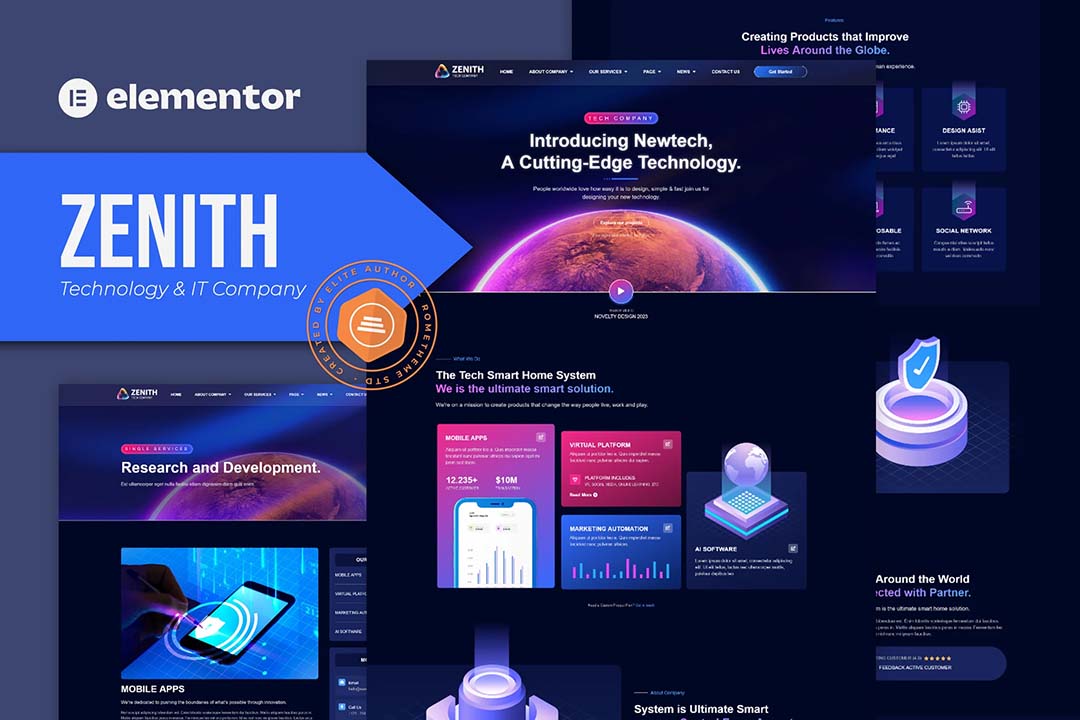管理在线商店通常需要付出很高的成本,而且经常得处理一大堆繁琐的手动流程。但好消息是,WooCommerce REST API 的出现简化了这一切。它就像是一个智能助手,让你能够用编程的方式来轻松控制电子商务平台,从而更好地管理和扩展 WooCommerce 商店。
![图片[1]-WooCommerce REST API 手册:全面解析和实战案例解析-光子波动网 | 专业WordPress修复服务,全球范围,快速响应](https://www.361sale.com/wp-content/uploads/2024/04/image-771.png)
使用 WooCommerce REST API 进行集成、自动化和扩展在线商店的功能,整个过程流畅无阻。你不仅可以节省大量的资源和时间,让工作流程变得更加简单高效,还能通过灵活的外部应用程序,随心所欲地定制商店的外观和风格。有了 WooCommerce REST API,管理在线商店变得更加轻松便捷!下面,我们一起深入了解 WooCommerce REST API,以编程的方式自动完成许多任务,并进一步提升电商业务效率。
使用WooCommerce REST API 的条件
在 WooCommerce 中生成 API 凭据
创建好一个 WordPress 网站,然后在 WooCommerce 中生成 API 凭据。要生成WooCommerce API 凭据,按照以下步骤操作:
1、登录到 WordPress 仪表盘,从侧边栏选择plug-in (software component)>Installed plug-ins ,然后激活 WooCommerce 插件。
2、激活插件后,选择WooCommerce >set up。然后单击"Advanced" 选项卡访问 WooCommerce 高级设置页面。
3、接下来,单击REST APIThe
![图片[2]-WooCommerce REST API 手册:全面解析和实战案例解析-光子波动网 | 专业WordPress修复服务,全球范围,快速响应](https://www.361sale.com/wp-content/uploads/2024/04/image-763.png)
4. Click“创建 API 密钥” maybe“添加密钥” 以生成 API 密钥。
5、接下来,系统会提示您输入Key details。它们是描述、用户和权限。输入密钥描述,根据需要更改用户,然后选择Read/Write权限。
![图片[3]-WooCommerce REST API 手册:全面解析和实战案例解析-光子波动网 | 专业WordPress修复服务,全球范围,快速响应](https://www.361sale.com/wp-content/uploads/2024/04/image-764.png)
6、单击Generating API Keys。使用生成的 API 密钥,可以通过编程方式访问和管理商店数据。记下使用者密钥和秘密,因为会在下一部分中使用它们来发出 API 请求。
![图片[4]-WooCommerce REST API 手册:全面解析和实战案例解析-光子波动网 | 专业WordPress修复服务,全球范围,快速响应](https://www.361sale.com/wp-content/uploads/2024/04/image-765.png)
了解 WooCommerce REST API 架构
WooCommerce API 基于 REST 架构构建。这使你可以通过适当的方法(GET、POST、PUT、DELETE)向端点发送请求,对 WooCommerce 数据(例如订单、产品和客户)进行读取和执行写入操作。
端点由请求方法和标准 URL 组成。通过端点,可以使用你选择的工具(Postman 或 Insomnia)来访问不同的存储数据。
获取产品列表
在获取产品列表之前,要确保你已向商店添加了一些产品。必须将永久链接结构更改为Plain以外的结构。单击侧边栏中的set up >Permanent link 并更改永久链接结构。如果不进行此更改,标准 URL 端点将无法正常工作。单击"Save changes"The
接下来,打开 Postman 并添加新请求。在 URL 部分中,使用https://<yourdomain>/wp-json/wc/v3/products.确保替换<yourdomain> 为您的 WooCommerce 网站域。
在授权选项卡中,选择Basic authentication ,然后输入消费者密钥作为user ID ,输入消费者密钥作为cryptographic。必须将这个授权添加到你向 WooCommerce REST API 发出的每个请求。发送请求,你应该会收到商店中所有产品的列表。
![图片[5]-WooCommerce REST API 手册:全面解析和实战案例解析-光子波动网 | 专业WordPress修复服务,全球范围,快速响应](https://www.361sale.com/wp-content/uploads/2024/04/image-766.png)
通过 REST API 管理产品
产品对象有一个属性列表,可以直接对产品进行分组、管理库存和设置价格——所有这些都以编程方式进行。
假设想要将新产品添加到创建的产品组中,你所需要的只是属性中的产品组 ID grouped_products The
要管理库存,请使用manage_stock respond in singingstock_status 属性,它们分别设置为true maybefalse ,instock,onbackorderrespond in singingoutofstock The
接下来,我们一起看看如何添加和更新现有产品详细信息。
使用 WooCommerce API 添加产品
1、在 Postman 中,添加新请求并将请求方法更改为POST。重用上一节中使用的端点 URL。单击“正文”选项卡,选择rawand then selectJSON作为正文格式。 JSON 有效载荷包含产品名称、类型(简单、可变或分组)、描述和简短描述。它还包含类别、标签和图片,你可以根据需要添加。
{
"name": "iPhone 15 Pro Max",
"type": "simple",
"description": "",
"short_description": "",
"categories": [
],
"tags": [],
"images": []
}2、执行请求。如果产品创建成功,应该会收到一个产品对象作为响应。记下产品 ID,因为你会在下一部分中用到它。
![图片[6]-WooCommerce REST API 手册:全面解析和实战案例解析-光子波动网 | 专业WordPress修复服务,全球范围,快速响应](https://www.361sale.com/wp-content/uploads/2024/04/image-767.png)
使用 WooCommerce API 编辑产品
编辑一下刚刚创建的记录。
1、在 “main body (of a book) “选项卡中,添加以下 JSON 正文:
{
"name": "iPhone 15 Pro"
}由于只是更新字段name ,因此不需要包含其他属性。在这种情况下,将其更改为“iPhone 15 Pro”。端点 URL 应为https://yourdomain/wp-json/wc/v3/products/<id>.
2、替换id 为在上一部分中创建的产品的 ID。不要忘记将请求方法更改为PUT。执行请求,应该收到一个产品对象作为响应。可以检查响应中的产品名称以确认其更新成功。
![图片[7]-WooCommerce REST API 手册:全面解析和实战案例解析-光子波动网 | 专业WordPress修复服务,全球范围,快速响应](https://www.361sale.com/wp-content/uploads/2024/04/image-768.png)
使用 REST API 进行订单管理
WooCommerce REST API 通过无缝检索订单和更新订单状态来促进自动化订单处理。它可以用编程方式检索订单,根据各种条件(例如日期、状态或客户)过滤订单,然后有效地处理它们。
这包括更新订单状态以反映履行或处理的各个阶段。然后,WooCommerce REST API 可确保准确的跟踪和与客户的沟通。此外,你还可以通过 API 管理退款,包括处理退款请求、自动处理退款以及更新订单状态(退款后)。
使用 WooCommerce API 获取最近的订单
1,在 Postman 中,添加一个使用GET请求获取订单的新请求。端点 URL 应如下所示:
https:///wp-json/wc/v3/orders2、在“参数”after选项卡中,输入 创建订单的日期的键和值。在这种情况下,请使用2024-03-08T00:00:00.请随意根据需要修改此日期。可以过滤订单,仅显示给定日期之后的订单。将其他 Postman 设置保留为默认值。
3、确保已在 WooCommerce 商店中下了一些订单,以避免返回空列表。执行该请求,会获得向你的商店发出的符合指定条件的所有订单的列表。
![图片[8]-WooCommerce REST API 手册:全面解析和实战案例解析-光子波动网 | 专业WordPress修复服务,全球范围,快速响应](https://www.361sale.com/wp-content/uploads/2024/04/image-769.png)
Update Order Status
要更新订单状态,获取你已下订单的 ID。在 Postman 中添加一个新请求,并将其请求改为 PUT。使用以下端点进行更新:https://yourdomain/wp-json/wc/v3/orders/。在 “正文 “选项卡中,添加以下 JSON :
{
"status": "completed"
}执行请求后,收到响应,订单标记为已完成。
![图片[9]-WooCommerce REST API 手册:全面解析和实战案例解析-光子波动网 | 专业WordPress修复服务,全球范围,快速响应](https://www.361sale.com/wp-content/uploads/2024/04/image-770.png)
客户管理和参与
利用 WooCommerce REST API,可以轻松创建新客户资料、修改现有客户的详细信息,并轻松获取他们的购买历史和偏好等全面信息。有了这些信息,企业就能更精准地了解客户的购物习惯,从而为他们量身定制个性化的营销策略。无论是推出针对性的促销活动、推荐适合的产品,还是提供忠诚度奖励,都能让客户感受到更贴心的服务。
这种精细化的客户数据管理不仅有助于企业与客户建立更紧密的关系,还能大大提升客户的满意度,并鼓励他们再次购买。
使用 WooCommerce API 添加客户
1、向此端点 URL发送POSThttps://<yourdomain>/wp-json/wc/v3/customers请求: 。不要忘记像之前一样添加授权。
2、在“正文”选项卡中,使用此 JSON 对象创建客户:
{
"email": "a.briann@gmail.com",
"first_name": "Brian",
"last_name": "Abraham",
"role": "customer",
"username": "briann.abraham",
"billing": {
"first_name": "Brian",
"last_name": "Abraham",
"company": "",
"address_1": "969 Market",
"address_2": "",
"city": "San Francisco",
"state": "CA",
"postcode": "94103",
"country": "US",
"email": "a.brian@gmail.com",
"phone": "(555) 555-5555"
},
"shipping": {
"first_name": "Brian",
"last_name": "Abraham",
"company": "",
"address_1": "969 Market",
"address_2": "",
"city": "San Francisco",
"state": "CA",
"postcode": "94103",
"country": "US"
}
}JSON 对象包含基本的客户详细信息,例如电子邮件、姓名、角色和用户名。它还提供账单和运输信息,包括客户的地址、位置和电话号码。
3、执行请求,会收到包含客户对象的响应。请记住客户 ID,会在下一部分中使用它来检索客户。
summarize
WooCommerce REST API 是一个强大的工具,它能让你通过编程方式轻松管理商店数据、提升电商购物体验,还能扩展在线商店的功能。有了它,普通的 WordPress 设置也能摇身一变,成为功能更强大的平台。要开始使用它,你只需在 WordPress 应用中安装 WooCommerce 插件,并参考本文中的示例来探索 REST API 的各种功能。这些示例将是你定制解决方案的基础。
对于电商网站来说,速度可是个关键因素;页面加载越快,顾客的购物体验就越好。而 WooCommerce API 支持从前端到 WordPress 后端的多个请求,这强调了优化后端性能的重要性。通过它,你的网站将运行得更加流畅,给顾客带来更好的购物体验。
Link to this article:https://www.361sale.com/en/8357The article is copyrighted and must be reproduced with attribution.






















![表情[xiaojiujie]-光子波动网 | 专业WordPress修复服务,全球范围,快速响应](https://www.361sale.com/wp-content/themes/zibll/img/smilies/xiaojiujie.gif)








No comments